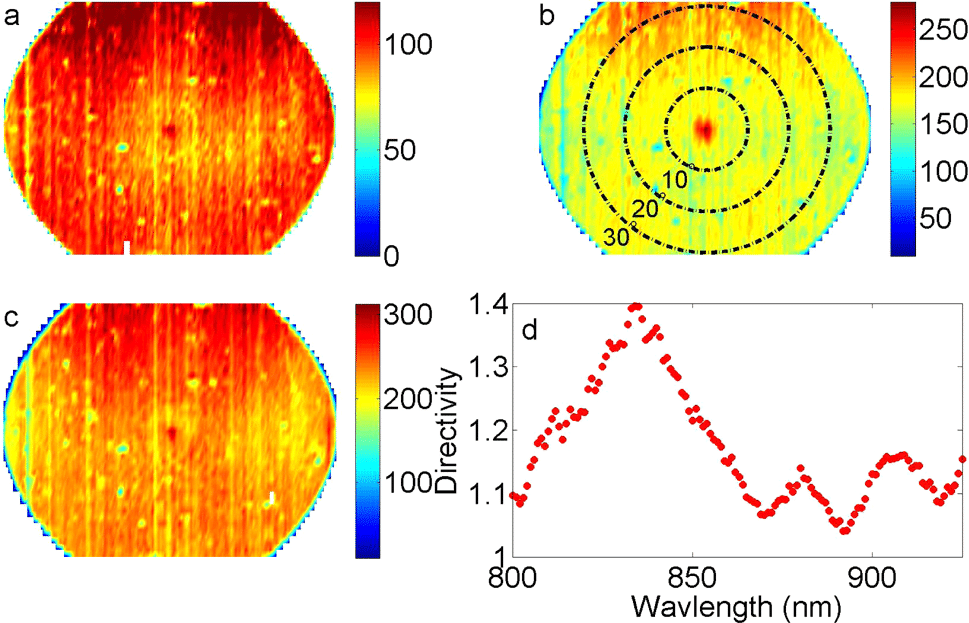
Full Spectral and Angular Characterization of Highly Directional Emission from Nanocrystal Quantum Dots Positioned on Circular Plasmonic Lenses
We design a circular plasmonic lens for collimation of light emission from nanocrystal quantum dots
at room temperature in the near IR spectral range. We implement a two-dimensional k-space imaging technique to obtain the full spectral-angular response of the surface plasmon resonance modes of the bare plasmonic lens. This method is also used to map the full spectral-angular emission from nanocrystal quantum dots positioned at the center of the circular plasmonic lens.
In Fig. 1(b) we show the collimation effect for emission at 835nm. A clear directional emitting beam with a divergence angle of only ∼4° full width at half-maximum is achieved (unlike Fig. 1 (a,c) which does not show a collimation effect for non-resonant wavelengths). This directional emission is spectrally broad with a bandwidth of 20 nm. We also achieve a directionality of 40% higher probability to emit photons into the collimated beam (Fig. 1(d)) [2].
We use the spectrally resolved k-space imaging method to get a direct comparison between the spectral-angular response of the resonant surface plasmon modes of the lens and the emission pattern of the quantum dots. This comparison gives a clear and detailed picture of the direct role of these resonant surface waves in directing the emission. The directional emission effect agrees well with calculations based on the coupled mode method [1]. These results are a step toward fabricating an efficient room-temperature single photon source based on nanocrystal quantum dots.
Fig 1. (a-c) - 2D k-space emission of nanocrystals positioned on the circular plasmonic lens. The collimation is evident for the resonant wavelength in (b). (d) The directivity as a function of the emission wavelength.
[1] Martin-Moreno, L., Garcia-Vidal, F. J., Lezec, H. J., Degiron, A., Ebbesen, T. W., Phys. Rev. Lett. 2003, 90, 167401
[2] Harats M. G., Livneh N., Zaiats G., Yochelis S., Paltiel Y., Lifshitz E., Rapaport R., Nano Lett., 2014, 14 (10), pp 5766–5771
moshe.harats@mail.huji.ac.il
Powered by Eventact EMS